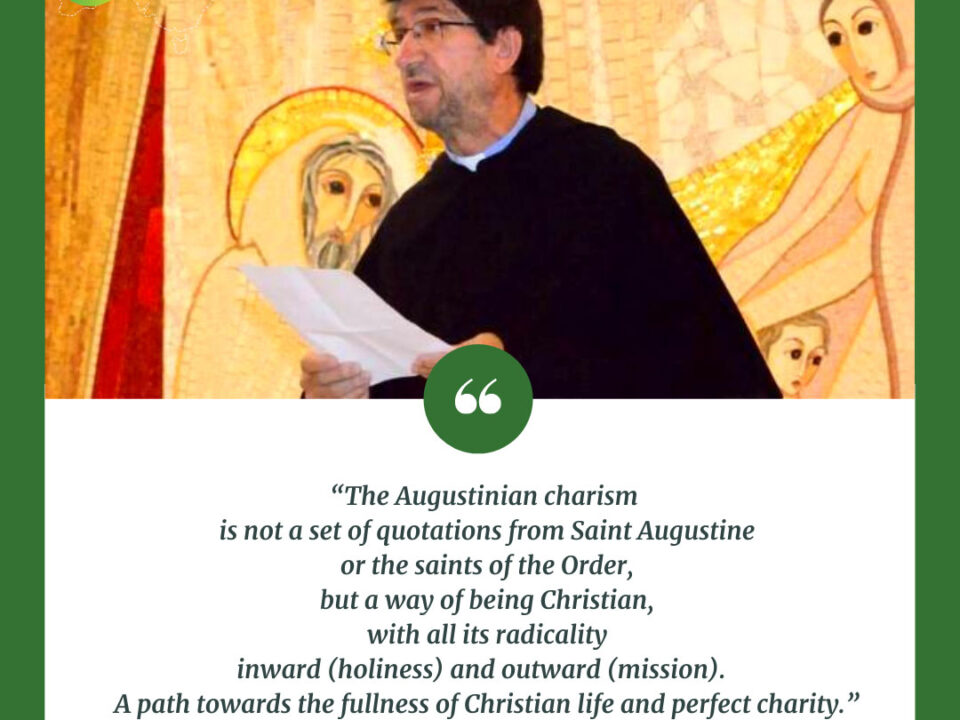

Digging Up the Past at Cambridge
Published: 25 October 2016

A press release of the Division of Archaeology of the University of Cambridge states that since October 2016 a team from the Cambridge Archaeological Unit (CAU) is of Augustinian interest.
It reports that the CAU has successfully being conducting a “dig” on campus that has uncovered the remains of the Augustinian Priory that stood there from about the year 1280 until King Henry VIII confiscated it in 1538.
This has been the largest excavation ever of a medieval religious house in Cambridge. The team have uncovered several large buildings that formed part of the friary cloisters, including the well- preserved remains of the chapter house. Discoveries of fine architectural stonework, window glass, decorated floor tiles and ornate roof tiles all demonstrate the high quality of the friary buildings. Other finds include writing implements and book bindings that attest to the importance of literacy at the friary.
The CAU have also excavated about thirty burials; preliminary observations indicate that these are all or mainly men and are likely to be the friars who lived at the site. Some individuals were probably as young as around ten years old, indicating that they were probably novices. Many of the burials were accompanied by buckles, indicating that the friars were buried with their black leather girdles (belts) which were a distinctive element of Augustinian dress.
This project is being undertaken by the Division of Archaeology, University of Cambridge and will bring together a range of scientific techniques, including: osteoarchaeology, intensive radiocarbon dating, aDNA, stable isotopes, geometric morphometrics and other analyses of a range of medieval and other cemeteries excavated in and around Cambridge.
The scale of excavations and quality of archaeological remains uncovered promises to provide numerous exciting insights into a hitherto little understood aspect of the town’s past.
On the Augnet website there is much about the history of the Augustinians in Cambridge over the centuries until 1538. Part of it is repeated here:
It took the Austin Friars until 1376 to come into possession of the whole of the land between the streets mentioned above. Even then, it is possible that they left untouched some of the previous private dwellings there, and earned the rental income thus provided. The Priory of the Austin Friars stood within St Edward’s Parish, and in 1290 the Austin Friars promised to send their servants to the parish church, and not themselves to administer sacraments to them or to any other laity. As will be indicated in the following paragraph, a major role of the Priory was the theological education of Augustinians, and not pastoral ministry to the local population.
In 1302 the Pope granted the Cambridge Augustinians the right of burial of people on their property, and in excavations in 1908 indicated that this right had been exercised, for among the skeletal remains found there were the bones of women and children. On the property, this was a burial area separate from the site of the graves of deceased Augustinians. (This is what the Cambridge Archaeological Unit are apparently now examining; have they found the larger gravesite yet?)
On 9 June 1318 Pope John XXII erected the priory at Cambridge as an Augustinian studium generale (an international study house), with full papal privileges in the granting of ecclesiastical degrees in theology. To have attained the necessary high academic standards for this papal recognition in the year 1318, the studium at Austin Friars Priory at Cambridge must already have been operating for a number of years before that date.
The Augustinian General (international) Chapter at Rimini, Italy in 1318 then legislated that both Oxford and Cambridge were always to have two masters of theology present, as was required at the longer-established Augustinian studium generale in Paris. The General Chapter simultaneously paid great honour to both Oxford and Cambridge by granting them the same status as Paris. As well, it gave Cambridge the same recognition as the slightly older Augustinian foundation at Oxford.
Above text from Augnet: www.augnet.org/default.asp?ipageid=1581



